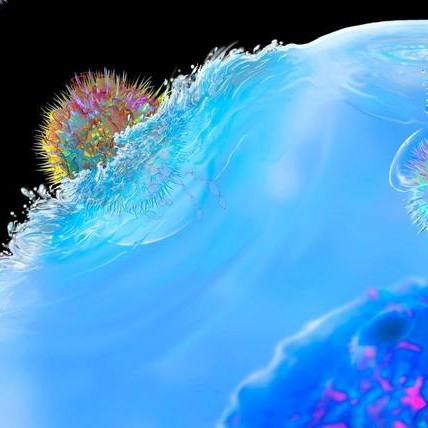-
Biotherapeutics
Science Saturday: Demystifying healing potential of stem cells
Mayo Clinic research has discovered proteins secreted by human stem cells that act as a "magic potion" to drive healing after a heart attack. The research uncovered that these cell-released regenerative particles harbor a pattern of functions mirrored in repair of the diseased heart, linking stem cell-transmitted information to the beneficial response of the recipient heart.
This proof-of-concept study on how cardiopoietic cells function is published in Stem Cells Translational Medicine.
"The study results indicate that the protein set that the cells export, known as their secretome, is responsible for providing restorative benefits," says Andre Terzic, M.D., Ph.D., director of Mayo Clinic's Center for Regenerative Medicine and senior author on the study. "Mapping the secretome may streamline the process of manufacturing regenerative therapeutics, rendering easier scalability and standardization, ultimately ensuring broader accessibility for patients."
Hearts damaged by a heart attack have limited means for self-repair, often leading to failure with poor prognosis. Cardiopoietic cells, which are in phase III clinical trials, are a regenerative technology developed at Mayo Clinic showing signs of therapeutic benefit for heart failure patients. This latest research contributes to the understanding of how cardiopoietic stem cell therapy works.
"The discovery that the cardiopoietic cell secretome harbors restorative properties may be exploited to assess reparative potential prior to patient delivery. This approach could be extended to evaluate other cell types and their respective therapeutic capacity," says D. Kent Arrell, Ph.D., first author on the study. "Bringing this new knowledge to the patient and broader clinical care is an ongoing endeavor."
The research
The research team used state-of-the-art methodology to decode the identity, regulators and functionality of proteins secreted by human cardiopoietic stem cells. By comparing cells derived from responding versus nonresponding heart failure patients, researchers could distinguish between proteins that triggered healing versus those that didn't. The functional imprint of this set of reparative proteins was echoed in the healing response of damaged hearts.

The functional imprint of this set of reparative proteins was echoed in the healing response of damaged hearts.
Long-term vision
Preparation of stem cell therapies requires a lot of time and resources, with scalability and standardization recognized as major hurdles to clinical-grade supply. Researchers envision the newest discovery to contribute in advancing cell-free biotherapeutics that achieve healing properties in a cost-effective manner, offering ready-to-use solutions at point of care. A priority for the Center for Regenerative Medicine is to accelerate advanced biomanufacturing of innovative regenerative solutions.
Additional research is ongoing building on these findings. The J. Willard and Alice S. Marriott Foundation, the Mayo Clinic Van Cleve Cardiac Regenerative Medicine Program and National Institutes of Health (R01 HL134664) provided the primary funding for this research. Dr. Terzic is the Michael S. and Mary Sue Shannon Director, Mayo Clinic Center for Regenerative Medicine, and the Marriott Family Professor of Cardiovascular Research.
###
Related research:
Mayo Clinic research discovers how stem cells repair damage from heart attacks
Long term safety, benefits of stem cell therapy for heart failure
Advancing cell-based regenerative therapy for heart failure









